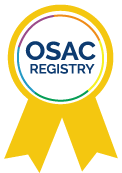July 2021
This Standards Bulletin from the Organization of Scientific Area Committees (OSAC) for Forensic Science provides a monthly update on:
- Standards moving through the OSAC Registry approval processes for published and OSAC Proposed Standards.
- Standards moving through the development process at standards developing organizations (SDOs).
Bulletin Summary:
- New standards added to the OSAC Registry: 4
- Standards under consideration for the Registry and open for comment: 4
- New SDO published standards: 1
- Standards open for comment at SDOs: 7
In this issue
OSAC Registry Updates

The OSAC Registry is a repository of high-quality, technically sound published and proposed standards for forensic science. These written documents define minimum requirements, best practices, standard protocols, and other guidance to help ensure that the results of forensic analyses are reliable and reproducible.
Four New Standards Added to the OSAC Registry
SDO Published Standards
- ASTM E1968-19 Standard Practice for Microcrystal Testing in Forensic Analysis for Cocaine (added July 6, 2021).
- ASTM E1969-19 Standard Practice for Microcrystal Testing in Forensic Analysis for Methamphetamine and Amphetamine (added July 6, 2021).
- ASTM E2125-19 Standard Practice for Microcrystal Testing in Forensic Analysis for Phencyclidine and its Analogues (added July 6, 2021).
- ASTM E2882-19 Standard Guide for Analysis of Clandestine Drug Laboratory Evidence (added July 6, 2021).
Criminal justice agencies can access the ASTM standards listed above by visiting OSAC's Access to Standards webpage.
Standards Open for Comment
OSAC Registry Approval Process for OSAC Proposed Standards
The OSAC Registry approval process for OSAC Proposed Standards is used to review OSAC drafted standards for technical quality and placement on the Registry. The following OSAC draft proposed standards are being considered for submission to an SDO. The final draft provided to the SDO will be available on the OSAC Registry as an “OSAC Proposed Standard.” OSAC welcomes comments on whether the current draft is suitable for release to the SDO as well as suggestions for improvements in content and wording. To be considered, comments must be placed in the OSAC Comment Form and sent to comments [at] nist.gov (comments[at]nist[dot]gov) by 11:59 p.m. ET on August 2, 2021.
- OSAC 2020-S-0003, Guidelines for Performing Alcohol Calculations in Forensic Toxicology.
- OSAC 2021-S-0006, Standard for the Use of GenBank for Taxonomic Assignment of Wildlife.
- OSAC 2021-S-0021, Forensic Autosomal STR DNA Statistical Analyses – General Protocol, Protocol Verification, and Case Record Requirements.
- NOTE: This is the first STRP-related OSAC Proposed Standard where OSAC will have the STRP and Resource Task Group* reviews and the open comment period occur concurrently to streamline our commenting processes.
- OSAC 2021-N-0026, Standard for Education and Training of Forensic Toxicology Personnel.
*OSAC Resource Task Group members are encouraged to review and submit comments on these documents to forensic [at] nist.gov (forensics[at]nist[dot]gov) in accordance with the STRP process.
Standards at FSSB for Vote
- ANSI/ASB Standard 023, Standard for Training in Forensic DNA Isolation and Purification Methods, First Edition, 2020.
- ANSI/ASB Standard 110, Standards for Training in Forensic Serological Methods, First Edition, 2020.
- ANSI/ASB Standard 115, Standard for Training in Forensic Short Tandem Repeat Typing Methods, First Edition, 2020.
- ANSI/ASB Standard 116, Standard for Training in DNA Quantification Methods, First Edition, 2020.
Is your organization implementing standards on the OSAC Registry? Complete OSAC’s Standards Implementation Declaration Form and send it to mark.stolorow [at] nist.gov (mark[dot]stolorow[at]nist[dot]gov) to let us know. Share your implementation experience and be featured in a future OSAC news post.
SDO Updates
New SDO Published Standards
The following standard has recently been published by ASTM:
- ASTM E2225-21 Standard Guide for Forensic Examination of Fabrics and Cordage. This revised guide was drafted by OSAC’s Trace Evidence Subcommittee and finalized by ASTM Committee E30.01 and is intended to assist individuals and laboratories that conduct examinations of fabrics and cordage for the purposes of analyzing and comparing types of fabric, cordage, and damage. A complete characterization of the fabrics, including their construction and other materials used in the assemblage of a textile (for example, sewing thread), is a critical component of a comprehensive forensic fabric or cordage examination.
Standards Open for Comment at SDOs
Academy Standards Board (ASB):
- Recirculation* – ASB Standard 127, Standard for the Preservation and Examination of Charred Documents, First Edition, 2021. This document establishes the minimum required procedures used by Forensic Document Examiners (FDEs) in the preservation of, examination of, and reporting on charred documents. This generally includes the examination of charred documents for content (writing, printing), material (paper, cardboard, plastic, etc.) and source determination. This does not include chemical examination of documents for accelerants or source of combustion. Comment deadline July 12, 2021.
- Recirculation* – ASB Standard 128, Standard for the Preservation and Examination of Liquid Soaked Documents, First Edition, 2021. This document establishes the minimum required procedures used by Forensic Document Examiners (FDEs) in the preservation of, examination of, and reporting on liquid-soaked documents. This generally includes the examination of documents exposed to liquids (water, blood, oils, etc.) for content (writing, printing), material (paper, cardboard, plastic, etc.), and source determination. This standard does not include the examination of documents for the identification of the liquid contaminate(s). Comment deadline July 12, 2021.
- Recirculation* – ASB Standard 085, Standard for Detection Canine Selection, Kenneling, and Healthcare, First Edition, 2021. This standard covers requirements for the selection, kenneling and health care pertaining to detection canines. It does not include training methodology standards. Comment deadline July 19, 2021.
- Recirculation* – ASB Standard 092, Standard for Training and Certification of Canine Detection of Explosives, First Edition, 2021. This standard provides the training requirements for a canine team (canine handler and canine), and details follow-on assessments for trained canine teams, in the field of explosives detection including traditional explosives detection canines (EDC), person screening canines (PSC), and explosives detection canines with person screening capabilities (EDC w/PSC). This standard is intended to be used as the basis for all phases of the training process and includes certification procedures, training and assessments, record keeping, and document management. Comment deadline July 19, 2021.
- Recirculation* – ASB Best Practice Recommendation 142, Best Practice Recommendations for the Resolution of Conflicts in Friction Ridge Examination, First Edition, 2021. This document provides the best practice recommendations for how to resolve conflicts between examiners at any point during the technical review or verification process of conflicting suitability decisions, conflicting source conclusions, and documentation of conflict resolution. This document does not address differences of opinion that occur at the consultation level or any organizational response once an error is discovered or the conflict(s) are resolved. Comment deadline July 19, 2021.
- Recirculation* – ASB Standard 146, Standard for Resolving Commingled Remains in Forensic Anthropology, First Edition, 2021. This document provides laboratory and field procedures and requirements for resolving commingled remains. The techniques presented include size, age, and sex similarities, articulation between skeletal elements, taphonomic similarities, and reconstruction of fragmentary remains. The document also describes the determination of MNI (Minimum Number of Individuals), as well as the LI (Lincoln Index) and MLNI (Most Likely Number of Individuals) based on the number of paired and unpaired bones. Comment deadline July 19, 2021.
- ASB Standard 138, Standard for Collection of Known DNA Samples from Domestic Mammals, First Edition, 2021. This standard provides the protocol for obtaining genetic known evidence samples (i.e., buccal swabs and pulled hair) for the purpose of genetic analysis from domestic animals such as dogs, cats, or livestock. This standard does not address sampling of non-domesticated animals. Comment deadline August 9, 2021.
*Comments on a re-circulation will only be accepted on revised sections of a document. Comments made to text not revised from the original comment period will not be accepted.
For the ASB documents listed above, download the comment template and return it to asb [at] aafs.org (asb[at]aafs[dot]org) by the comment deadline.
Work Proposals for New or Revised Standards
The following documents are being initiated and are expected to result in new or revised standards.
ASB:
- On June 25, 2021, a Project Initiation Notification System (PINS) was published on page two in the ANSI Standards Action. This will begin a 30-day period for public comment on the initiation of ASB’s work on the following document:
- BSR/ASB 172, Standard for Examination of Mechanical Checkwriters and their Impressions. This standard provides procedures for determining classification information and machine identification of mechanical checkwriters. These procedures include evaluation of the material. These procedures are applicable whether the examination and comparison is of questioned and known items or of exclusively questioned items.
ASTM:
- WK77471 Standard Practice for Microcrystal Testing in Forensic Analysis for Cocaine is a work item revision to existing standard E1968-19 developed by Committee E30.01.
- WK77472 Standard Practice for Microcrystal Testing in Forensic Analysis for Methamphetamine and Amphetamine is a work item revision to existing standard E1969-19 developed by Committee E30.01.
- WK77473 Standard Practice for Microcrystal Testing in Forensic Analysis for Phencyclidine and its Analogues is a work item revision to existing standard E2125-19 developed by Committee E30.01.
- WK77530 Practice for Core Forensic Responsibilities Training developed by Committee E30.11.
Other News
Apply to Join OSAC!

The success of OSAC’s efforts to facilitate the development of technically sound forensic science standards depends on the collaboration and dedication of volunteers who have expertise in a broad array of forensic science disciplines as well as scientific research, statistics, law, and policy. OSAC is currently seeking to fill member vacancies on its committees and subcommittees due to a number of membership terms that will be expiring this September.
If you want to participate in the standards development process and make an impact on the forensic science community, please submit an application to be eligible and considered for the positions opening in October.
Call for Nominations for OSAC's Sharon B. Nakich Award

OSAC is seeking nominees to receive the 2021 Sharon B. Nakich Award. This OSAC peer-to-peer award is in honor of our colleague, Sharon Nakich, and acknowledges a helpful attitude, kindness, teamwork, or behind-the-scenes contributions to support the goals of OSAC. It recognizes an individual who has made significant contributions to promote OSAC’s mission through his or her support of OSAC.
This nominee works diligently and tirelessly as a champion for OSAC, at times without recognition.
All OSAC members and affiliates are eligible for this award, as well as any non-OSAC member who has contributed significantly to furthering the mission of OSAC.
To submit your nomination, send two or more narrative statements from at least two individuals that include, but are not limited to a description of:
- Specific activities the nominee was involved in that had a positive effect in supporting OSAC’s mission.
- How the individual’s actions helped the organization further its goals.
- The nominee’s willingness to go the extra mile.
All nominations should be submitted to Laurel Farrell (ljfarrellco [at] msn.com (ljfarrellco[at]msn[dot]com)) by August 1.
OSAC Registry Implementation Survey: Your Input Needed

OSAC is seeking to understand how organizations are using standards on the OSAC Registry and what support they need to improve implementation. To do that, we have released a survey to assess the current state of Registry implementation. The survey is intended to be a yearly snapshot and assessment, and the first one will cover the 46 Registry standards posted through March 2021.
The survey will close August 20 and results will be shared in OSAC’s Fall Newsletter/Annual Report, later in October. If you have any questions, please email the OSAC Program Office at forensics [at] nist.gov (forensics[at]nist[dot]gov).
Other Forensic Science News, Events & Training
NIST Publishes Review of DNA Mixture Interpretation Methods
On June 9, the National Institute of Standards and Technology (NIST) published a scientific foundation review of DNA mixture interpretation methods. The draft report, which is open for public comment until August 9 before being published in final form, reviews the methods that forensic labs use to interpret evidence containing a mixture of DNA from two or more people. Read more here.
National Institute of Justice
Subscribe to NIJ’s forensic list (https://nij.ojp.gov/subscribe) to see the latest NIJ awards, solicitations, events, and publications.
Forensic Technology Center of Excellence
NIJ’s Forensic Technology Center of Excellence (FTCoE), provides evidence-based resources about forensic technologies and emerging challenges. Check out the latest Just Science podcasts to hear more about forensic anthropology and pathology, and impression, pattern, and trace evidence research in NIJ’s 2021 R&D and Beyond mini season. Also register for the webinar, Novel Psychoactive Substance Naming Conventions & Challenges on July 22.

